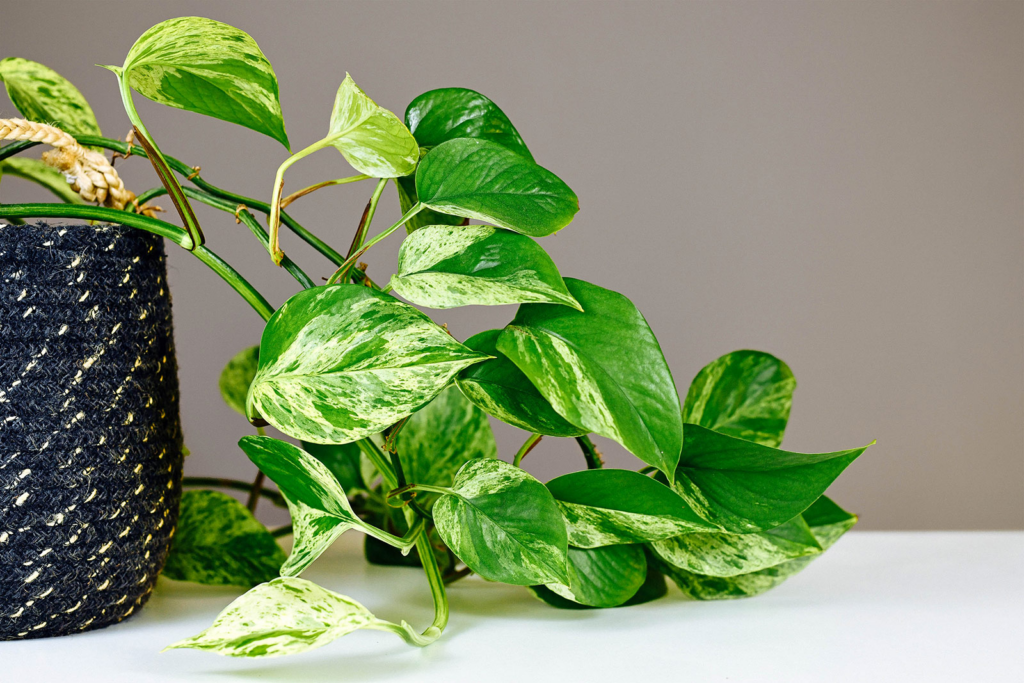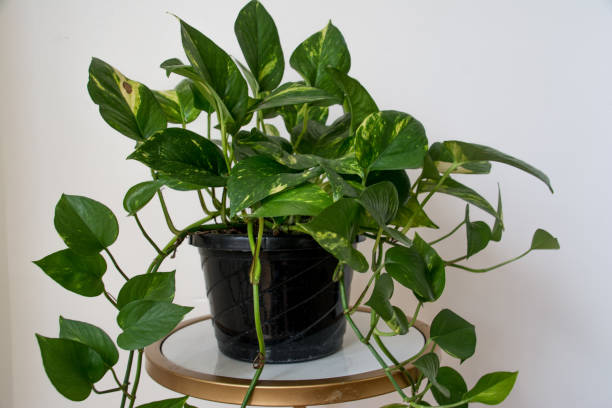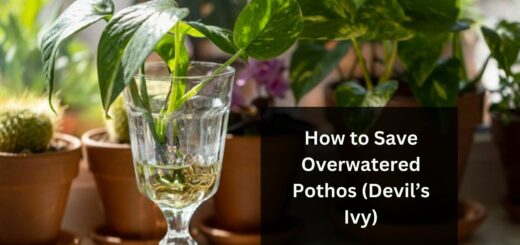Pothos Flower: Do Pothos Plants Flowers (+Blooming Tips)
Are you looking to add positive vibes, more productivity, and less stress to your area? Why not add Pothos flower? But do they bloom? Hey folks! I’m Anna Scott, a Gardener by heart and Profession, started my Journey 15 years ago and Now I am teaching other gardeners as well to achieve their goals.
Pothos plants are even famous by another name, Devil’s ivy and belong to the Arum family. It is grown in almost everyone’s yard. Briefing on it, pothos is described as an evergreen plant with a thick and waxy texture. Its leaves are heart-shaped with thin layers of yellow color on the leaves. These beautiful plants are frequently sold in plant stores, nurseries, and grocery stores and are a perennial favorite of plant lovers.
So, what are you waiting for? Are you ready to know if pothos flower? If yes, then stay connected with this guide till the end for proper understanding.

Do Pothos Flower?
The answer is Yes, they do flower, but sometimes it becomes rare as they will flower after becoming mature. The pothos flower depends on various ideal conditions. They are considered amazing plants, but they do not flower in the containers because of their habitat.
They will grow wildly in their location or the tropical rainforest. They can do anything to reach the sunlight by spreading massively on the trees and buildings. These wild plants are sometimes hard to recognize for some people who have only seen the pothos in the pot.
Conditions For Pothos Flowering
It is said that there are two stages of growth of pothos such as juvenile or vegetative, and mature or reproductive. Yes, you heard it right. Being a houseplant, pothos will remain in its juvenile stage battery, reducing small foliage in the plant as the concentration of the plant is on the vegetative growth of stems, roots, and leaves.
Under these ideal conditions, the plant will grow beautifully in your home garden. But it is sad to know that they will never get the chance to bloom. Pothos originated from the Solomon Islands in the Pacific. It will creep along with the ground and tend to climb up the trees to 60 feet. The plant receives dappled sunlight and humid conditions for its growth in its natural habitat.
The ability to climb will allow the plant to become mature. The roots will be length and the stems will be enlarged to a thick cord. Its leaves will be grown about 3 feet long which looks like a palm.

Even if the plant is receiving good climatic conditions then also it will take about 10 to 20 years to attain its reproductive face where it will be considering developing flowers, seeds, and fruits. It also produces a hormone called gibberellin that pushes the flowering in the plant. Last, but not least it is seen that they will not often flower even in their wild habitat.
In the United States, the plant has been seen blooming outdoors in the southernmost areas of the country whose USDA hardiness growing zones are 10 to 12. The areas include Texas, Southern Florida, California, etc.
The Pothos Flower: What Does It Look Like?
Do you know what the pothos flower looks like? As you know, there are various members of the Arum family. Both pothos flowers also consist of two components: spathe and spadix.
Spathe is considered a purple and cream-colored structure that you will see behind the upright spike-shaped spadix.
Various pothos flowers will bloom together on the stems. When the plant becomes mature, the spathe will dry and droop off. The flowers will develop into a spike of orange-colored fruits.
Best Conditions for Getting a Pothos to Bloom
If you reside in an area whose USDA growing zones are 10 to 12, then it is ideal to grow pothos in the tropical greenhouse. As I mentioned there should be ideal conditions for the pothos to bloom.

So if you are sure that the conditions you are providing to the plant are proper then it’s great. But if it’s not then you should follow the below best conditions for getting to bloom. They are as follows:
Light
- Pothos likes to grow in the bright indirect sunlight.
- If the direct sunlight is too intense for the plant, then it will cause sunburn to the plant.
- Keep the plant near the east-facing window to remain healthy by receiving sunlight.
Temperature
- The ideal temperature for this plant lies between 65 to 75°F.
- They can even tolerate the temperature level up to 90°F.
- It will not be able to tolerate less than 50°F of temperature as it will die.
- Keep the plant away from cold drafts or air vents too.
Humidity
- This plant is in love with the humidity. Being a native to the tropical rainforest, it likes high humidity.
- During winter, the humidity is low in the home time make use of a humidifier to manage the humidity level in the plants.
- The ideal level of immunity for this plant lies between 40% to 60%.
- Another way to raise the level of humidity is to make use of a pebble tray filled with water and keep it on the pot.
Soil
- Pothos plant prefers loose, well-drained soil for its growth.
- Make your organic mix with the help of perlite, peat moss, sand, orchid bark.
- It will add more nutrients to the soil by boosting the drainage.
- Choose the pot that has a good amount of drainage holes, and if not, then at least one.
Water
- Every plant needs water to grow well. Pothos need water when the soil becomes completely dry.
- Check the moisture of the soil by inserting a finger inside the soil about 1 to 2 inches deep.
- If it feels dry to the touch, then is the right time to water your plant and if it is damp, then there is no need to water the plant.
Fertilizer
- This plant needs fertilizer to grow vigorously in your area.
- Fertilize the plant to times during its growing season.
- After watering the plant, put the fertilizer on the soil so that it dissolves properly.
- Make use of balanced N-P-K fertilizer for the plant. Fertilize it once a month from spring till early fall.
Pests
- This plant is prone to various pests like aphids, spider mites, Bugs, snails, scales, etc that tend to come to the plant to suck its foliage and satisfy their hunger.
- To avoid it, make use of insecticidal soap or any horticultural oil such as neem oil.
- Check the pests underside the leaves, it can also be removed by spraying water strongly on the plants.
Pruning
- Pruning is suggested to maintain a healthy shape and size in the plant.
- If the plant will not be pruned on time, then it will be grown 10 feet long as a house plant.
- To maintain its shape, make use of clean and sterilized scissors or blades.
- Do not cut more than one-third of the plant foliage. Prune the plant when it is actively growing.
Toxicity
- Yes, pothos is considered a toxic plant for pets and humans, just like all the other family members of Arum.
- Its foliage contains a component named calcium oxalate crystals that tend to cause damage to lips, tongue, and throat if ingested.
- It will cause dogs and cats to vomit if they swell it.
- Also, it can irritate the skin in humans. So be cautious while handling the plant and wear gloves.
Do Pothos Plants Flower Indoors?
It is said that it is highly impossible for an indoor pothos plant to flower. It is because the plant does not reach its reproductive stage as I mentioned above.
Indoor pothos plants remain in their juvenile stage by producing small heart-structured leaves, and 1 to 10-foot-long vines with no flowers.
Last, but not least, they will not be growing flowers because of limited growing climatic conditions. When the plant is in dwarf conditions, then it becomes impossible for the plant to reproduce.
Summing up the context
In this guide, you come to know that Pothos plants are even famous by another name, Devil’s ivy, and belong to the Arum family. It is grown in almost everyone’s yard. Briefing on it, pothos is described as an evergreen plant with a thick and waxy texture. Its leaves are heart-shaped with thin layers of yellow color on the leaves.
The pothos flower depends on various ideal conditions. They are considered amazing plants, but they do not flower in the containers. It is because of their habitat. They will grow wildly in their location or the tropical rainforest.
They can do anything to reach the sunlight by spreading massively on the trees and buildings. These wild plants are sometimes hard to recognize for some people who have only seen the pothos in the pot. These beautiful plants are frequently sold in plant stores, nurseries, and grocery stores and are a perennial favorite of plant lovers. I hope you are clear with the guide, if not, then read the whole guide properly. I will come back with another informative guide soon. Till then safe gardening.
Thanks for reading! Happy Gardening!
FAQs
How often do pothos flower?
The flowering capacity of pothos depends on the ideal conditions provided to the plant. They will flower sometimes when they reach their reproductive phase. Indoor pothos plants will not flower in your garden area.
How do I know if my pothos are happy?
When you are looking if the plant is happy or not, then look for the leaves as it will tell the plant’s well-being nature. If the leaves are still green, glossy perky with a great texture, then it is happy. Whereas if there are brown-colored leaves in the plant, then you are not watering the plant properly and the plant is unhappy.
Do pothos like lots of water?
Yes, pothos like to be watered after every 1 to 2 weeks for their well-being. Keep the gap between waterings. Keep in mind not to overwater the plant as it will cause root rot in the plant. Also, check the moisture of the soil if it is dry, then only water the plant. If the plant becomes overwatered, then it will show some signs such as yellow-colored leaves, and black stems on the plant.




